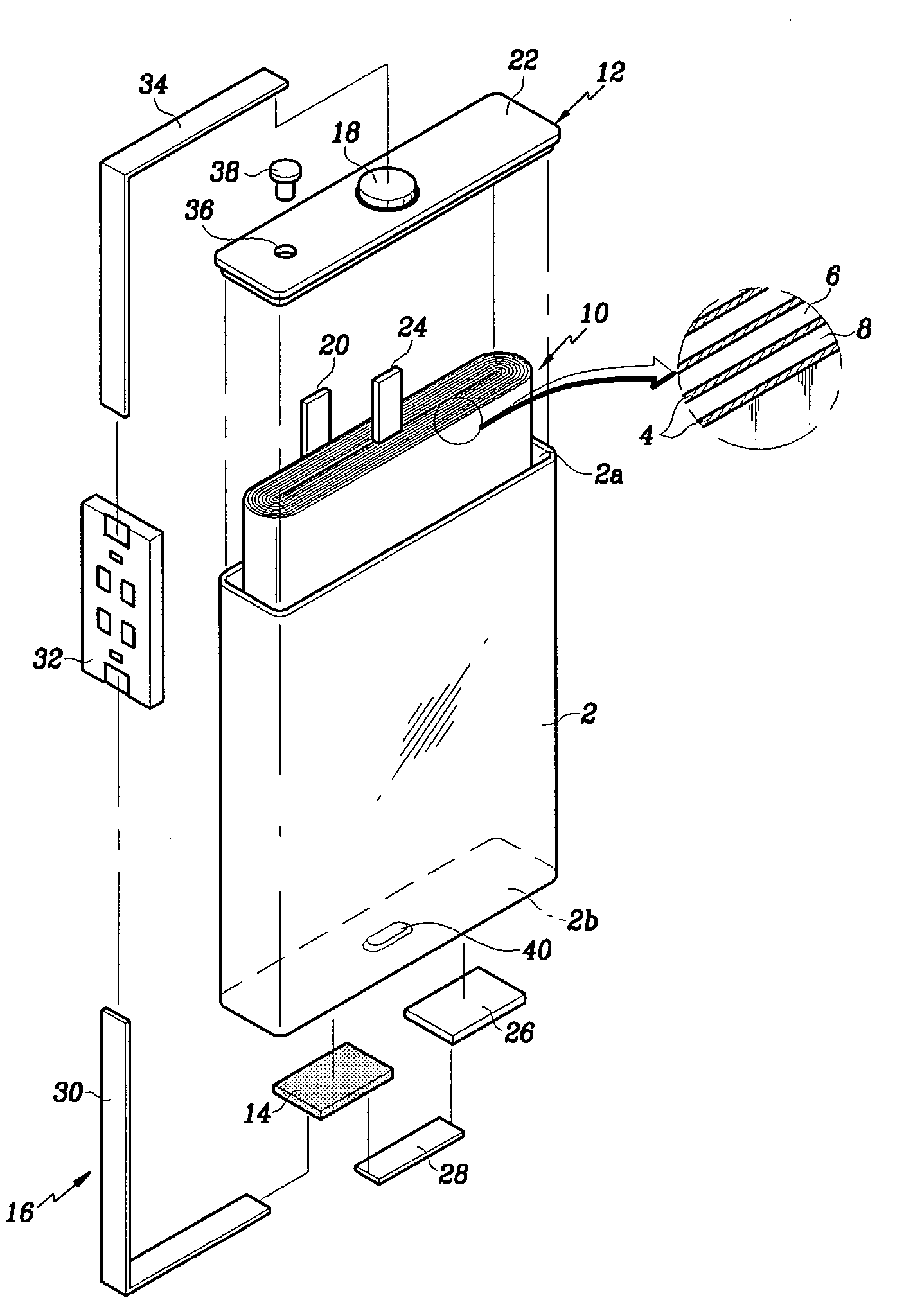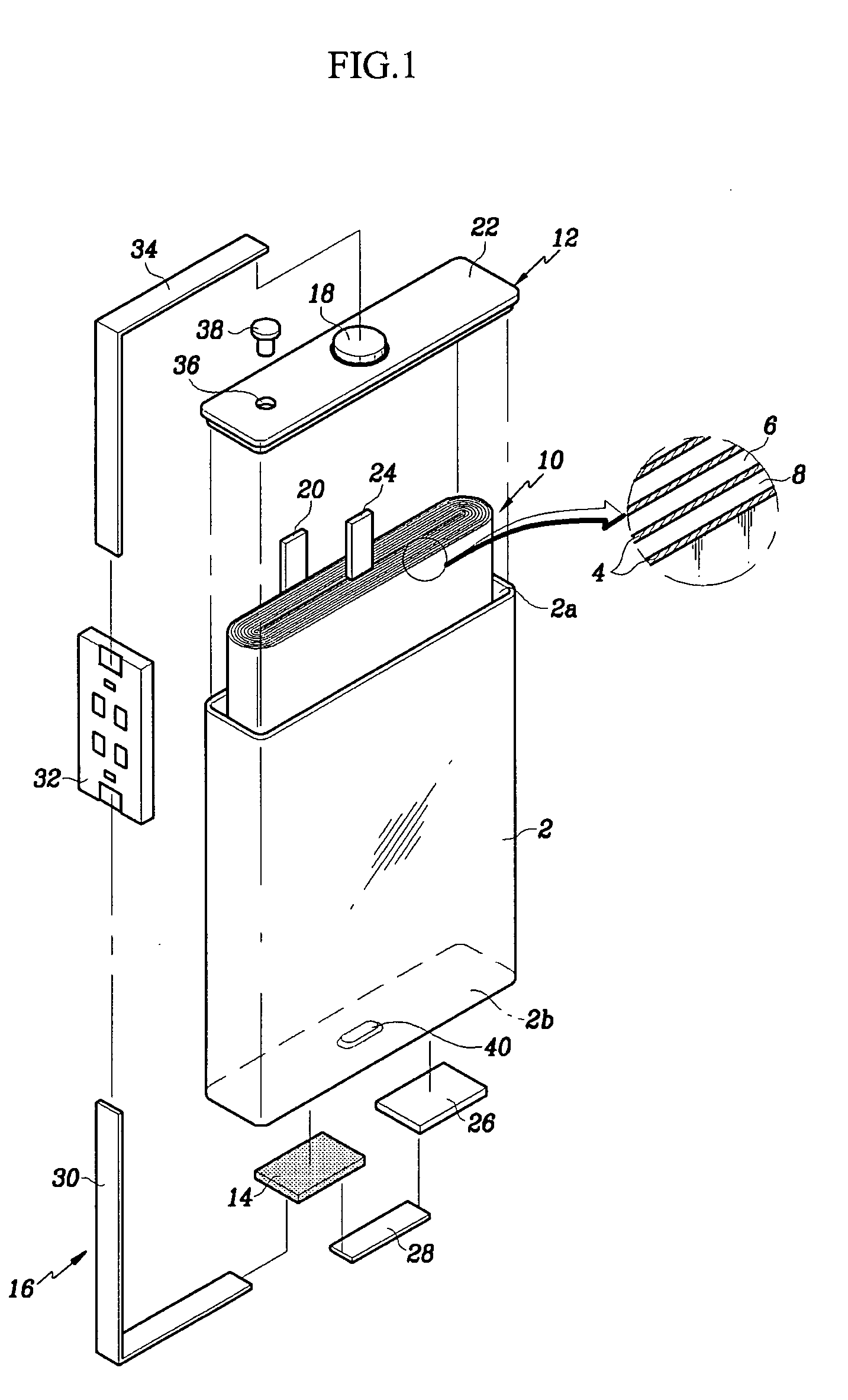Secondary battery
a second battery and battery technology, applied in the field of secondary batteries, can solve the problems of compromising the reliability of the device, affecting the service life of the primary cell, and generating heat from the laser beam used in laser welding,
- Summary
- Abstract
- Description
- Claims
- Application Information
AI Technical Summary
Benefits of technology
Problems solved by technology
Method used
Image
Examples
Embodiment Construction
[0028] Reference will now be made in detail to the embodiments of the present invention, examples of which are illustrated in the accompanying drawings, wherein like reference numerals refer to the like elements throughout. The embodiments are described below to explain the present invention by referring to the figures.
[0029] FIG. 1 is an exploded perspective view of a secondary battery according to an exemplary embodiment of the present invention, and FIG. 2 is a front view of the secondary battery of FIG. 1.
[0030] The secondary battery includes a container 2 that is substantially in the shape of a regular hexahedron. A separating plate 4 is interposed between stacked layers of an anode plate 6 and a cathode plate 8, and this assembly is wound in a jelly roll configuration forming an electrode assembly 10. The electrode assembly 10 is placed in the container 2 together with a predetermined amount of electrolyte. A cap assembly 12 is mounted to an upper end of the container 2 to the...
PUM
| Property | Measurement | Unit |
|---|---|---|
| temperature coefficient | aaaaa | aaaaa |
| distance | aaaaa | aaaaa |
| shape | aaaaa | aaaaa |
Abstract
Description
Claims
Application Information
 Login to View More
Login to View More - R&D
- Intellectual Property
- Life Sciences
- Materials
- Tech Scout
- Unparalleled Data Quality
- Higher Quality Content
- 60% Fewer Hallucinations
Browse by: Latest US Patents, China's latest patents, Technical Efficacy Thesaurus, Application Domain, Technology Topic, Popular Technical Reports.
© 2025 PatSnap. All rights reserved.Legal|Privacy policy|Modern Slavery Act Transparency Statement|Sitemap|About US| Contact US: help@patsnap.com



